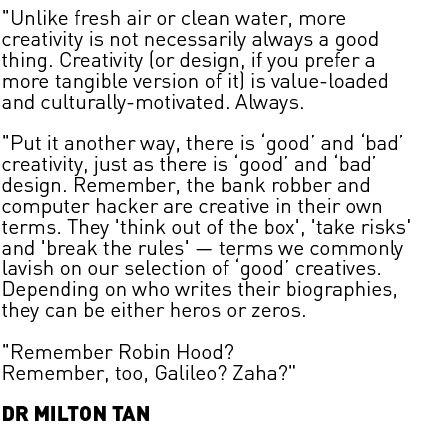There won’t be a Singapore Design Festival this year as the DesignSingapore Council reviews the format and content of this biennial event that has been held since 2005. Again, like a national design centre, it’s not the first time the government has organised a design event of this scale. In 1988, the then Trade Development Board (TDB) launched the International Design Forum, a biennial event held at the Raffles City Convention Centre that included an exhibition of world designs from the likes of Japan, UK and the US and also a series of talks by leading design studios of the times, such as Pentagram Design, Vignelli Associates and GK Industrial Design.
 NATIONAL ARCHIVES OF SINGAPORE
NATIONAL ARCHIVES OF SINGAPORE
The forum brought the spotlight onto Singapore design both here and internationally, helping to grow the industry and community here. However, after five successive forums, Business Times reported in 1998 that some wondered if the forum had become nothing more than a commercially-oriented trade show to sell design services rather than one that showed design in its “pure form”. There is no news if subsequent forums changed in response to this criticism, but it continued to be held three more times, in 2000, 2003 and 2005.
DESIGN FOR BUSINESS VERSUS DESIGN CULTURE
 The final time the forum was held was together with the first Singapore Design Festival in 2005. It became just one event on a festival calendar that aimed to showcase design as more than just a business tool but also part of our culture and society. This expanded direction reflected its new organisers, the DesignSingapore Council, which was no longer overseen by an economic-driven agency, but instead housed under the Ministry of Information, Communications and the Arts.
The final time the forum was held was together with the first Singapore Design Festival in 2005. It became just one event on a festival calendar that aimed to showcase design as more than just a business tool but also part of our culture and society. This expanded direction reflected its new organisers, the DesignSingapore Council, which was no longer overseen by an economic-driven agency, but instead housed under the Ministry of Information, Communications and the Arts.
According to the the festival’s press release:
The most important differentiating factor of the Singapore Design Festival is the focus on the design process and the conceptualisation of ideas, as opposed to the showcase of static end products. In essence the Festival aims to transmute the design culture in Singapore and from around the world into an interactive and “live” presentation of the design process and its end products.
In my opinion, the festivals did bring this aspect of Singapore’s design culture out through exhibitions such as 20/20, Utterrubbish, and 10 Touch Points. But, by the last edition in 2009, even though the festival successfully hosted the Icsid World Design Congress, I felt what was presented to the public was more a trade show than a festival that looked at design culture.
Could this issue be at the heart of the current review of the festival? The issue of what role design is expected to play in the eyes of the government? Can design culture justify the millions being pumped into growing and supporting it?
A DESIGN FESTIVAL OF OUR OWN
When the Singapore Design Festival was launched in 2005, the architecture community also launched a similar event to bring architecture to the public. The Singapore Institute of Architects (SIA), a non-governmental organisation for the architecture community here, started Archifest in the same year to also reach out to the general public. The biennial event has grown from strength to strength and successfully held its fourth edition this year.
The design community has much to learn from this event as it has shown how a festival can be possible with the government playing a supporting role rather than as an organiser. One possibility is that design organisations like The Design Society and the Designers Association Singapore could take the lead. Or it could be a completely ground-up initiative as suggested by Felix Ng of Anonymous and Silnt during an interview: “We shouldn’t need a top-down approach to organise a festival. People on the ground can come together and do it. There are very capable and enterprising independent creators in Singapore, and we can come together and make a month of design here ourselves.”
A self-reliant community will better be able to steer how design should grow and develop rather than be at the whims and fancies of government policies. However, the biggest questions for many designers, I suspect, is why should I be forking out my own time and money for the community to benefit when I’m already struggling and busy enough? It is such a mindset that is preventing a more robust design community from emerging, and until that changes, the development of the entire industry is still going to be very much up to the government of the day to direct.


